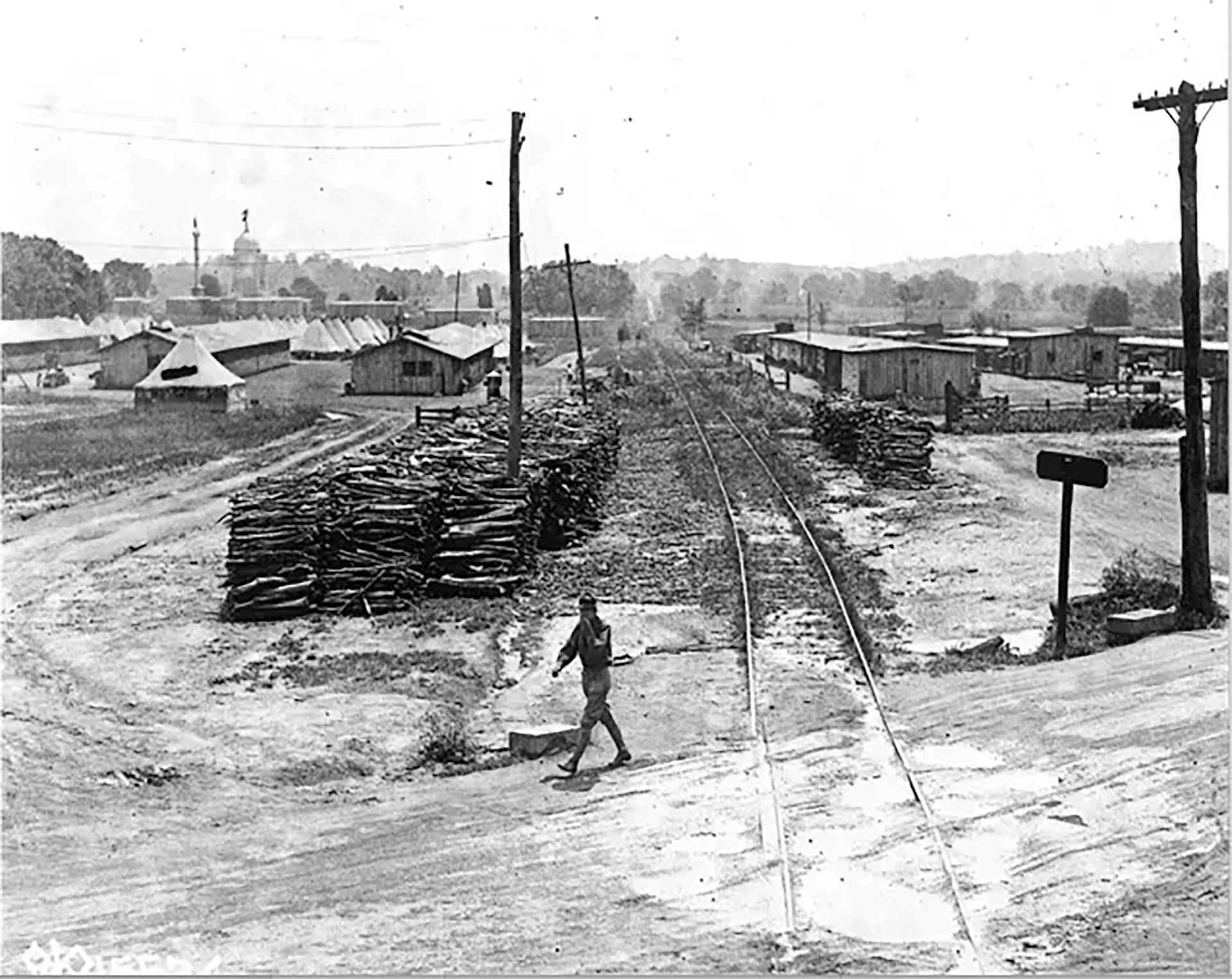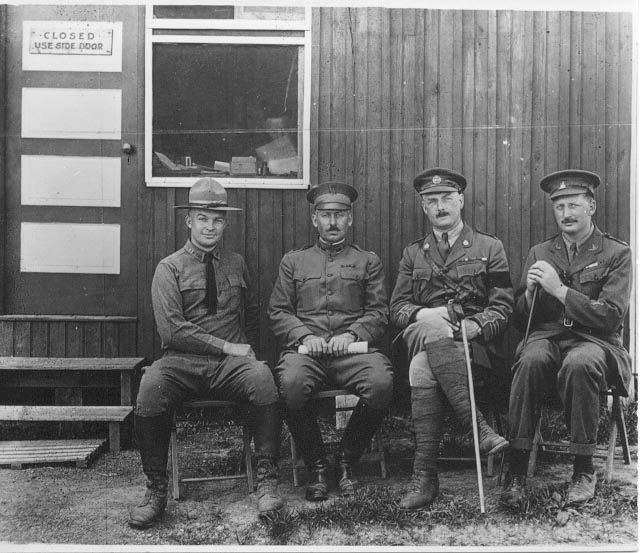Vestiges of Another War
by Diana Loski

Camp Colt in 1918 --
Note the PA Memorial in distance
(National Park Service)
Over a century ago, another war was raging in Europe and America finally became part of it. In Gettysburg, a new camp opened in the spring of 1918. Camp Colt became the first camp for training soldiers in a new weapon, the tank.
The camp’s commander was Captain Dwight D. Eisenhower, who arrived in Gettysburg in early April to begin establishing the camp. The troops arrived in June. Soldiers were sent to Camp Colt to specifically train in the art of tank warfare. These awkward contraptions caught much attention as they lumbered through Gettysburg toward the place where the Confederates long ago attempted to take the Union center line in Pickett's Charge. Eisenhower often left one of the tanks at the gate of the camp so that the citizenry could look at it.
The United States fully entered the Great War during its final year – Europe and its allies had been fighting since 1914. The addition of American troops helped Great Britain, France and their allies to win the war. The armistice became effective on November 11, 1918.
Camp Colt, which consisted mostly of tents to house the inhabitants, faced a few challenges. Two soldiers were killed in July when a mounted gun misfired. Another soldier was killed in a fall from a vehicle. The camp faced its greatest challenge, however, with the influenza outbreak during the late summer and early fall of 1918. Captain Eisenhower quickly employed hygienic measures to contain the deadly virus with a significant measure of success – though the camp and town of Gettysburg still suffered overwhelming numbers of deaths.
By December 1918, with the war ended, Camp Colt was closed and removed. It had been in existence for less than nine months, from its inception to its end. Little remains to show that it was here, with its tanks 0nce roaming over the fields where the Union and Confederate soldiers had fought 55 years earlier.
Dwight D. Eisenhower, the man who became the Supreme Allied Commander in Europe during World War II and later the 34th President of the United States, showed the mettle of his leadership beginning with Camp Colt at Gettysburg.
He would return to Gettysburg in his later years, purchasing a farm.
Almost nothing remains of the old camp. The fields are quiet and bucolic, the peace they offer belie the military action from 1863, and again from 1918. Gettysburg, fittingly, has had its place in more than one war.
Sources: Camp Colt File, Gettysburg National Military Park. Eisenhower, Dwight D. At Ease: Stories I Tell to Friends, pp. 138-152. National Park Service: Eastern Acorn Press, 1967.

Eisenhower (left) and staff at Camp Colt, 1918
(National Park Service)

